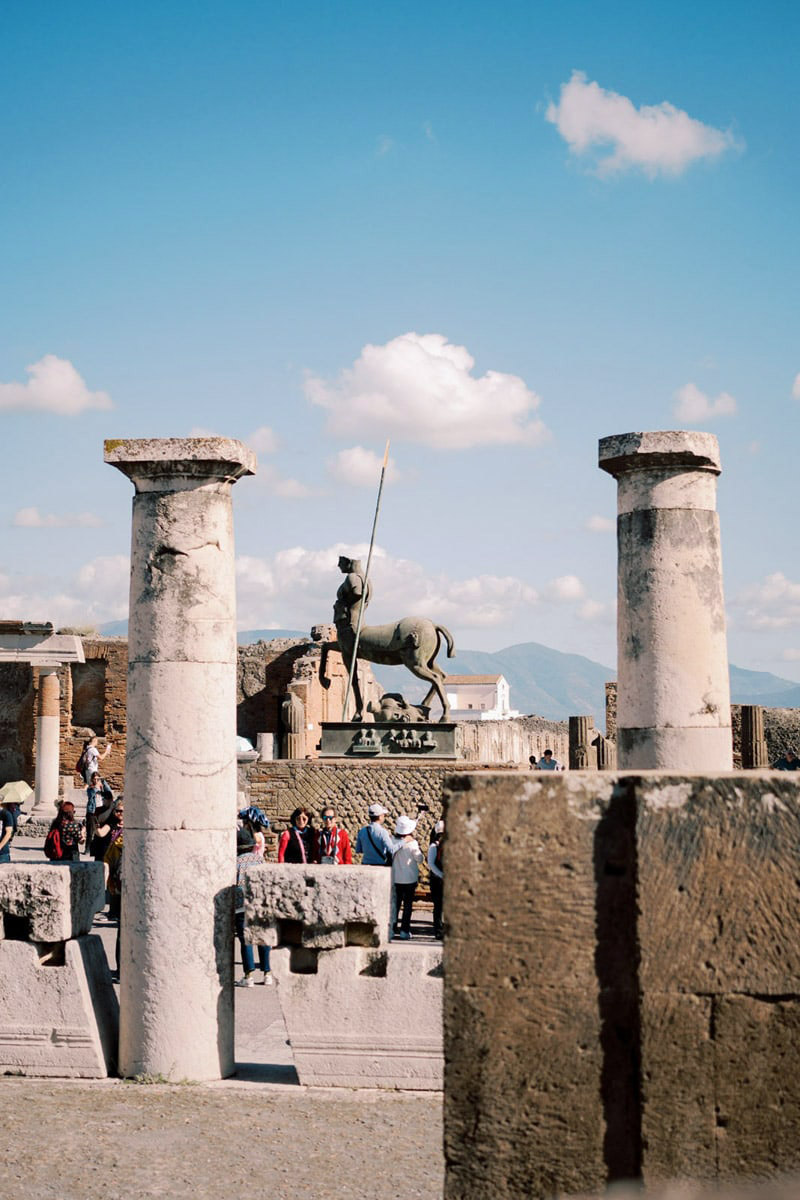Visiting Pompeii in 2023 was an experience that left me profoundly mesmerized.
One can imagine what Pompeii might be like, but nothing can truly prepare you for the profound emotions it evokes.
Walking through the ancient streets, I felt a deep, almost surreal connection to a world frozen in time. The ruins spoke to me in whispers of lives once lived, bringing forth a meditative reflection on the impermanence of human endeavors, struck by a poignant sense of both nostalgia and reverence.
Here is a short photographic record of the experience, with some brief descriptions.
The Forum
The Civil Forum was the heart of city life, central to administration, justice, business, trade, and worship.

One of the most emotionally striking images is the view of the Forum with Mount Vesuvius looming in the background.







The Amphitheatre
This amphitheatre, where gladiatorial matches took place, is the oldest known from Roman times. It could hold up to 20,000 spectators from Pompeii and nearby towns and was located on the outskirts to manage large crowds.




House of Vettii
The House of the Vettii is one of the most famous and well-preserved residences in Pompeii, and belonged to two freedmen brothers who mad their fortune by selling wine after gaining their freedom. The house is renowned for its elaborate frescoes, depicting mythological scenes and daily life, and its luxurious garden courtyard.
The House of the Vettii illustrates the broader Roman social structure, where successful freedmen could attain considerable wealth and influence.


House of Menander
The House of Menander is one of the grandest and most impressive homes in Pompeii, named after a large fresco of the Greek playwright Menander found within, reflecting the broader Roman fascination with Greek art and intellectual life. The house is so large it in fact spans an entire city block!



The Palestra
The Palaestra was a vast open-air sports ground dedicated to physical exercise and athletic training. This facility was primarily used by the youth of Pompeii for various physical activities, including wrestling, running, and discus throwing. In the center of the Palaestra is a large swimming pool, where athletes would practice swimming and other water-based exercises.


The temple of Apollo
A fascinating aspect of the Temple of Apollo in Pompeii is the discovery of a series of inscriptions that provide a glimpse into the religious practices of the time. These inscriptions, found on the temple’s walls and surrounding structures, include dedications and offerings made by Pompeii’s citizens to Apollo. They reveal the personal and communal devotion to the god, showcasing how individuals and families sought to gain favor or express gratitude.






The Thermopolium
Romans frequently ate out, and the thermopolium was a key part of urban life for many people.
Eating out was particularly common among the lower classes and those living in insulae (apartment buildings) that often lacked cooking facilities.
These establishments provided a convenient way to enjoy hot, ready-made meals, offering a range of options from simple fare like bread and olives to more elaborate dishes such as stews and sausages.
One interesting aspect of thermopolia is that they often served as social hubs, much like modern eateries. They were places where people could gather, chat, and catch up on news.



Teatro grande
The Teatro Grande, or Great Theatre, in Pompeii is one of the most impressive and well-preserved examples of Roman theater architecture. The Teatro Grande was equipped with a movable awning called a velarium that could be stretched over the seating area to provide shade for the audience, and in fact, this system was operated by sailors from the nearby port, demonstrating the complexity and practicality of Roman engineering in providing comfort during performances.




Political graffiti in Pompeii reveals citizens’ engagement with local politics, including endorsements of candidates, personal grievances, and social commentary. These inscriptions provide insights into the city’s political dynamics, rivalries, and public opinion during Roman times.

Sensual imagery was a common element in the decorative schemes of many Pompeian houses (though this particular example is from the public baths). These artworks were not just for decoration; they were thought to symbolize fertility, prosperity, and sensual pleasure. In some cases, such imagery also served as conversation starters during social gatherings. This blend of erotic themes with art and daily life highlights how the Romans integrated sensuality into their social and cultural norms.













